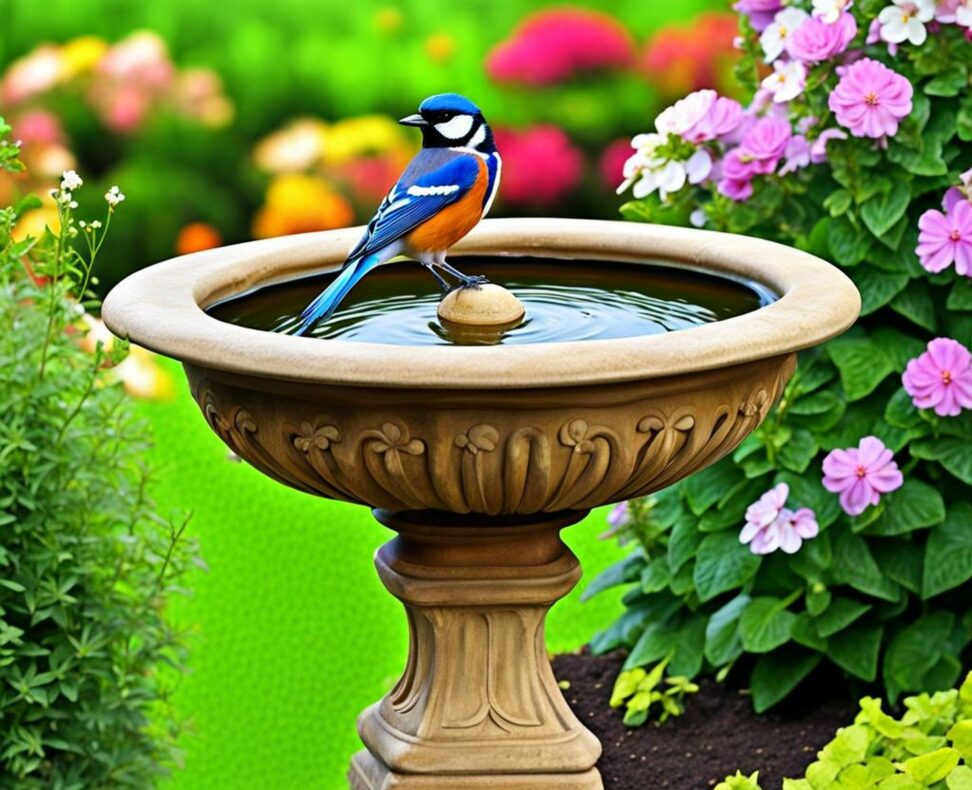Add a Charming Focal Point to Your Garden with Classic Bird Baths
A classic pedestal bird bath can add tranquil charm to outdoor spaces. The sight and sound of colorful songbirds gathering to splash and drink from these stately water features is a delight. Read on to learn how to choose the perfect bird bath to complement your garden design.
Classic birdbaths typically have a pedestal base and bowl or saucer shape. Materials like stone, concrete, cast iron, and glazed ceramic are common. Each has pros and cons regarding durability, maintenance, and aesthetics.

Choosing a Material for Your Garden Bird Bath
Stone birdbaths made from granite, marble, or sandstone add natural, rugged beauty to gardens. Though heavy, their durability makes up for difficulty moving them. Absorbent natural stone requires more frequent refilling.
Concrete birdbaths offer intricate shapes and patterns at lower costs than stone. Sealing the concrete protects the finish. Weight can make concrete baths tough to reposition.
Cast iron baths are indestructible and withstand weather fluctuations. But their metal composition shows signs of rust over time if not regularly treated. Wrought iron is lighter but less durable.
Glazed ceramic birdbaths provide glossy colors from vibrant hues to natural earth tones. While susceptible to cracking if exposed to freezing temperatures when water-filled, properly cared for ceramic baths last for years.
Size, Shape, and Design
The diameter of your birdbath bowl or basin is key. Optimal size is approximately 3 feet wide and 2 inches deep. This allows adequate space for multiple birds while remaining shallow enough for smaller species to access water easily.
Scalloped edges, decorative tiers, and sculptural accents add visual interest. Nature-inspired designs with leafy, floral, or animal motifs complement outdoor spaces beautifully.
Placement and Mounting
Set your birdbath in an open, elevated area with good visibility to maximize its charm. Nearby trees or shrubs provide landing and takeoff spots. Raised beds deter predators.
Choose a ground or pedestal mount. Ground mounts settle directly into the earth or a concrete base. Pedestals are freestanding mounts with a base providing height. Optimal birdbath height is between 3 and 5 feet.
Caring for and Maintaining Garden Bird Baths
Keep birdbaths filled with clean, fresh water daily. Scrub and disinfect them thoroughly each week using a very mild bleach solution to prevent harmful mold and bacteria from developing.
During winter months, use bird bath heaters, de-icers, or aerators to prevent freezing and provide open water for thirsty birds. Adding a few perches like river rocks also gives birds a place to stand and drink or bathe.
Accenting Your Garden Birdbath
Accentuate birdbaths with lush native plants and seeded bird feeders to encourage visiting songbirds. Position solar lights to create a magical glow after dark. Decorative found objects like glass balls or pebbles add interest.
You can turn your birdbath into a true focal point by designing a specific birdbath garden area with bird-friendly plants, stones, wind chimes, and other decorative elements to complement the tranquil water feature.
Additional Bird Bath Options for Gardens
Beyond classic pedestal designs, consider incorporating other water features to quench bird thirst in your landscape.
- Bird bath bowls or shallow dishes can be placed at ground level or mounted on trees, walls, fence posts, or deck railings.
- Flowing water in small backyard ponds, fountains, and cascades will attract various avian species.
- Install a solar-powered self-filling birdbath to conserve electricity and water.
- Craft a unique birdbath from recycled containers and other repurposed materials.
As colorful songbirds flock to your new birdbath, take time to appreciate these serene garden moments. The beauty of nature and peaceful wildlife activity a classic birdbath invites into your outdoor living space is a true joy.
A bird bath can become a charming garden focal point with a little creativity.